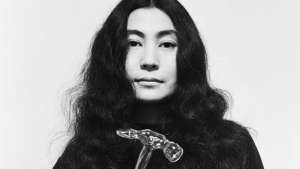Gerhard Human is a visual artist and graphic designer based in Cape Town, South Africa. By day, Human works as a creative director for Masters and Savant design and animation studio. By night he develops his own portfolio with compelling artworks that deal with fringe figures of society, post-apocalyptic outcomes and the demonisation of marginalised cultures. His work has been exhibited in galleries in Sydney, Amsterdam, New York and South Africa.
Human sat down with us to discuss his reflexive approach toward the effect that mainstream media has on our understanding of warfare and remote cultures. He presented four artworks that demonstrate his outlook in different ways, each exemplifying his colourful, detailed drawing style and bearing a thought-provoking name.
The illustration “Radical Islam”, for example, uses a play on words to question what the viewer immediately associates with the term “radical” when discussing the Islamic faith. Here, Human uses the name purely in the sense of coolness – a symbolic gesture of skateboarding culture rather than organised terrorism. The artist depicts a figure that represents ordinary people who happen to be of the Islamic faith and have no desire for conflict.
“Jihadi Selfie”, on the other hand, was directly inspired by a CNN news report Human watched in which the image of two military soldiers taking selfie together, struck a cord of irony for the artist. The illustration depicts signs of two seemingly opposite worlds in one moment – Human wanted to show that armed men of war can still engage in the harmless, 21st-century act of taking a friendly photo together. The barmy fun of social media and Instagram selfies seems at odds with the sinister flavour of assault rifles and military life. Human emphasises two polarised hallmarks of this modern age in one stroke.
“Harbinger”, taking a surreal turn, addresses the demonisation that occurs when religion becomes synonymous with cultural and geographical strife. A mystical, masked figure hovers above a mountainous landscape with a weapon resting in his lap, flanked by opposing machines of war below. Here, Human sought to portray the Bogeyman effect in a literal way. To many, the understanding of foreign cultures is based on fear and sensationalism rather than fair representation.
“Deeply Entrenched” is a fractal installation – a tiled artwork that forms an infinite pattern in every direction. Its structure is integral to the concept behind it. The drawing portrays the cyclical nature of cultural clashes, that humanity is forever bound to inflict war on itself over and over. Human highlights the detrimental side of humanity's enduring tribalism and the chilling possibility that our species may never pull itself out of the wheel of warfare. Human used gold paint and stone textures in “Deeply Entrenched” to signify the roles that wealth and perceived stability play in this grim part of human nature.
Without falling to the overtly provocative nor narrating direct political commentary, Human highlights the fallibility of stereotypes and the negative connotations that some news sources attach to broad groups of people. According to him, a subtle change of mind can ultimately have the most impactful effect.
“The best thing an artist can do is to be true, to express what you are seeing in the truest way you know how to do so. It might not be relevant for everyone, but it might solve something for someone,” he said.







